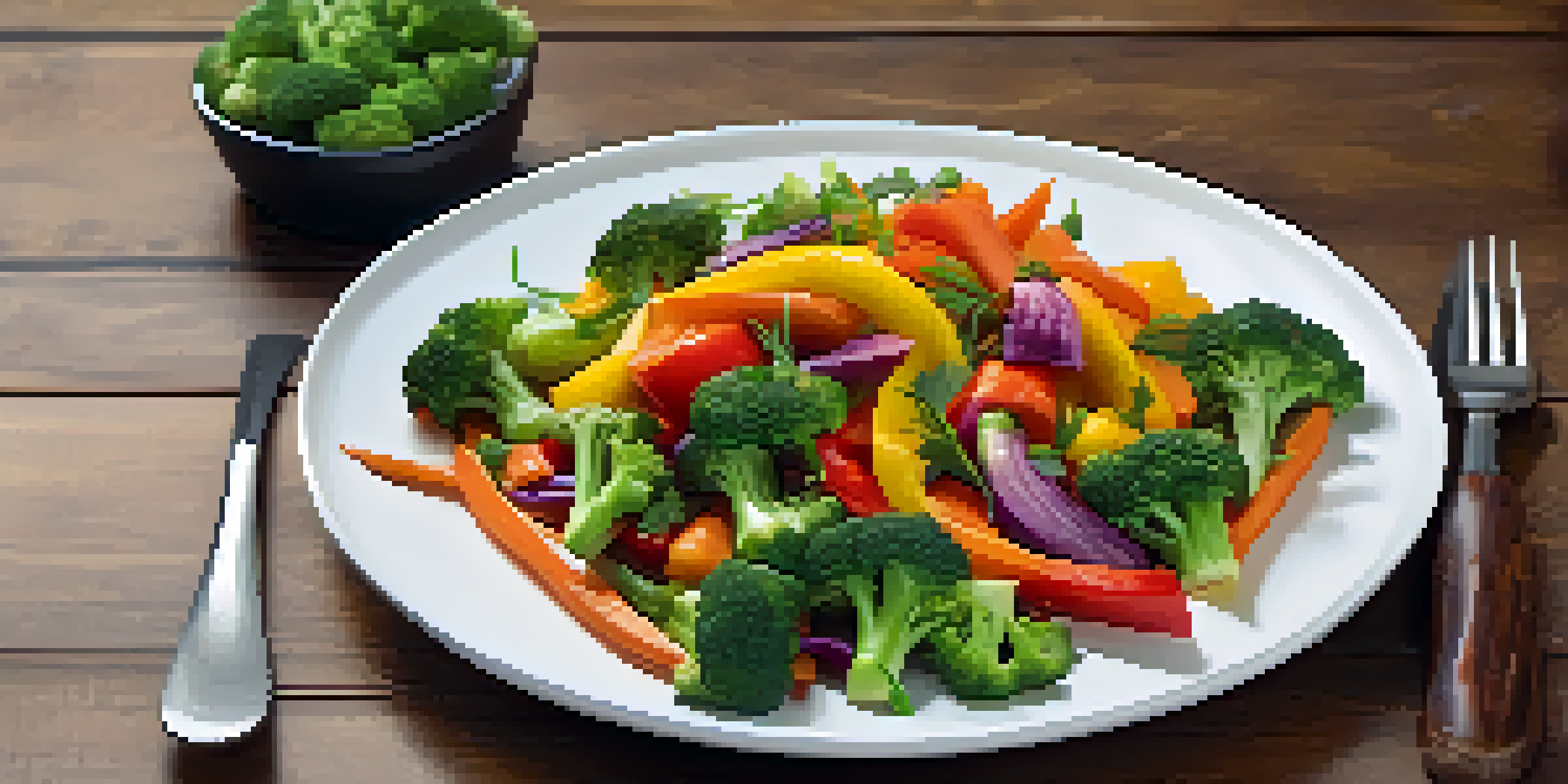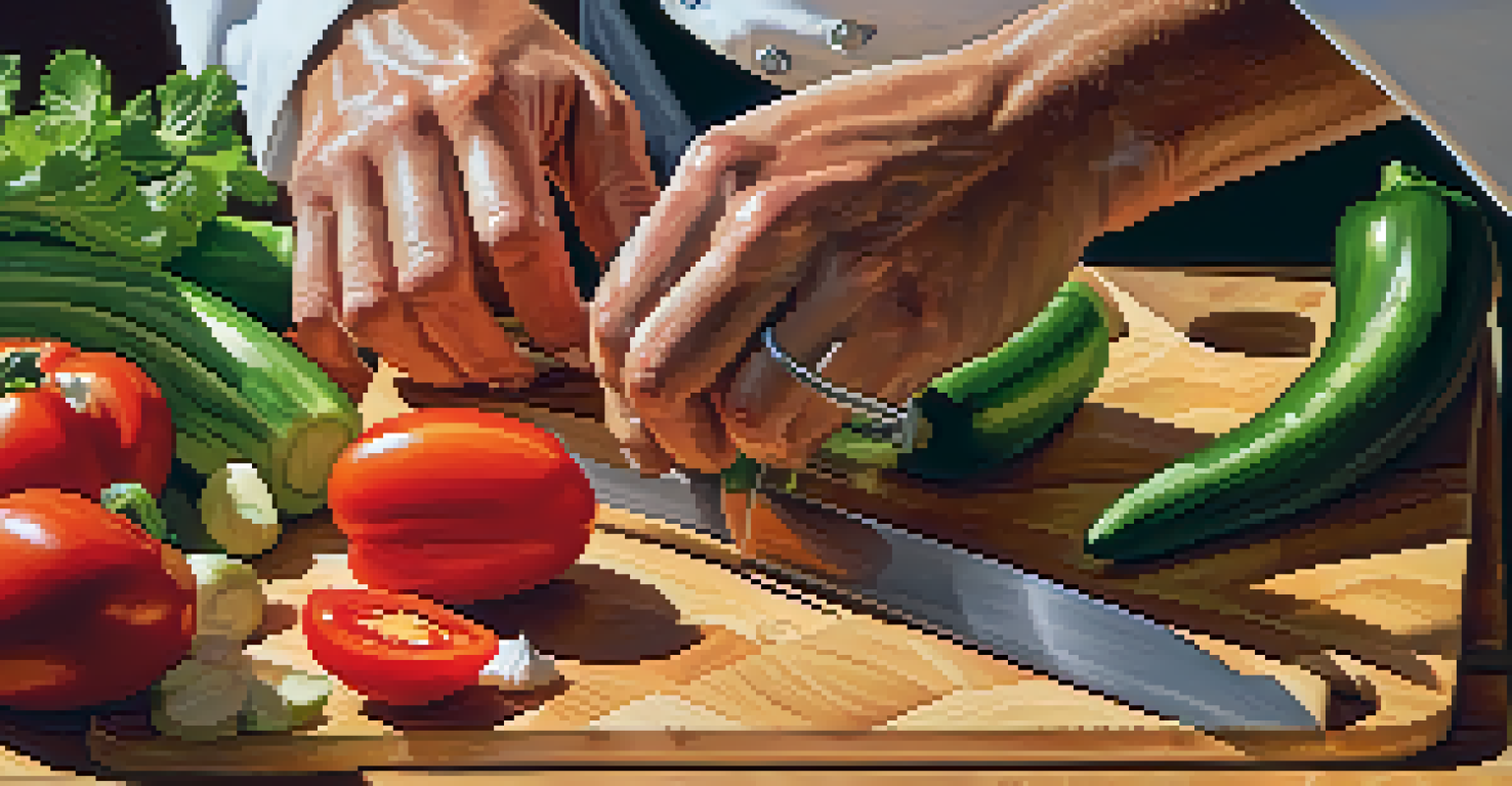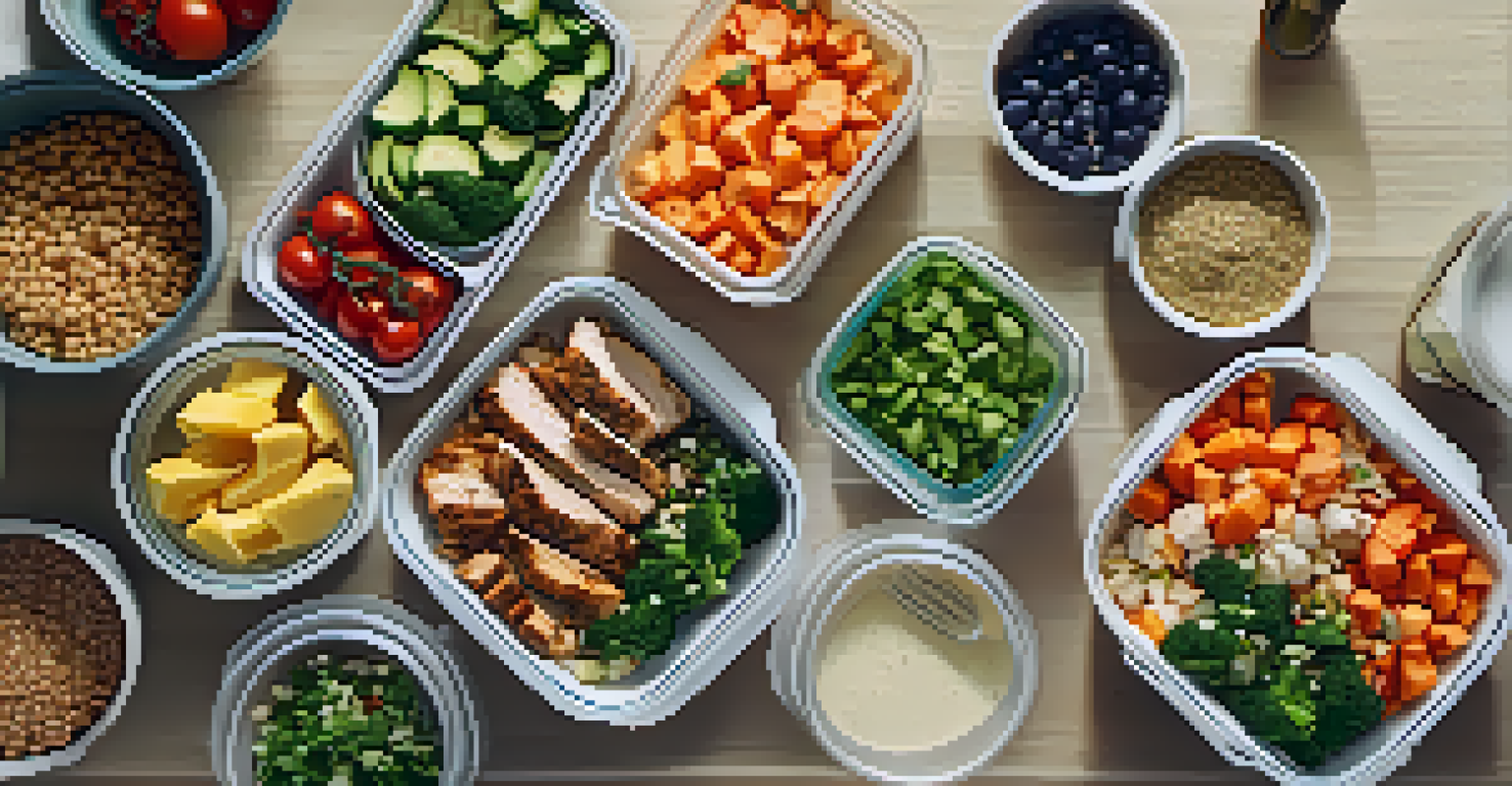Healthy Cooking Skills: From Basic to Gourmet Techniques

Understanding the Basics of Healthy Cooking
Healthy cooking starts with understanding the basics. Knowing how to chop, sauté, and steam can make a significant difference in your meals. These foundational skills not only help you prepare nutritious dishes but also encourage you to experiment with flavors and ingredients.
Let food be thy medicine and medicine be thy food.
For instance, learning how to properly chop vegetables can save you time and ensure even cooking. When vegetables are cut uniformly, they cook at the same rate, leading to a more harmonious dish. Plus, mastering basic techniques can empower you to create a variety of meals without feeling overwhelmed.
Remember, healthy cooking is about making informed choices. Use fresh ingredients, explore whole grains, and incorporate lean proteins. These basics can set the stage for more advanced cooking techniques as you gain confidence in the kitchen.
Essential Kitchen Tools for Healthy Cooking
Having the right kitchen tools can elevate your cooking experience dramatically. Basic items like a sharp knife, cutting board, and non-stick pans are essential for healthy meal preparation. Investing in quality equipment can make cooking more enjoyable and efficient.

For example, a good chef's knife not only makes chopping easier but also enhances safety. A dull knife can slip and cause accidents, while a sharp one allows for precision and control. Similarly, non-stick pans reduce the need for excess oils, supporting healthier cooking methods.
Master Basic Cooking Skills
Understanding foundational techniques like chopping and sautéing empowers you to create nutritious meals with confidence.
In addition to these basics, consider tools like steamers, blenders, and food processors. These can help you create healthy meals more easily, whether you're making smoothies, soups, or purees. The right tools can inspire creativity in your cooking journey.
Meal Prep: A Key to Healthy Eating
Meal prep is a powerful technique that can transform your approach to healthy cooking. By planning and preparing meals in advance, you not only save time but also make healthier choices throughout the week. It’s like setting yourself up for success right from the start.
Cooking is like love. It should be entered into with abandon or not at all.
Imagine dedicating a few hours on Sunday to chop vegetables, marinate proteins, and portion out snacks. When the busy weekdays arrive, healthy meals are just a microwave or oven away. This strategy reduces the temptation to order takeout or reach for processed snacks.
Moreover, meal prep encourages you to try new recipes and ingredients. You can experiment with different flavors and cuisines without the pressure of cooking from scratch every day. It’s a fun way to explore your culinary skills while maintaining a healthy diet.
Cooking with Whole Foods: A Healthier Approach
Cooking with whole foods is a game changer for your health. Whole foods, like fruits, vegetables, whole grains, and lean proteins, are packed with nutrients and flavor. When you focus on these ingredients, your meals become not only healthier but also more satisfying.
For instance, replacing white rice with quinoa or brown rice can significantly boost the nutritional value of your meals. Whole grains provide more fiber, which aids in digestion and keeps you feeling full longer. Plus, they add a delightful nuttiness that enhances any dish.
Meal Prep for Healthy Eating
Planning and preparing meals in advance saves time and supports healthier choices throughout the week.
Incorporating more whole foods into your cooking also encourages creativity. You might discover new favorite ingredients or learn how to prepare vegetables in innovative ways. This exploration will not only improve your cooking skills but also enrich your overall diet.
Flavoring Your Dishes: Herbs and Spices
Herbs and spices are the secret weapons in healthy cooking. They add depth and flavor to dishes without the need for excess salt or fat. By learning how to use these ingredients effectively, you can create gourmet experiences right in your own kitchen.
For example, fresh herbs like basil, cilantro, or parsley can brighten up a simple salad or pasta dish. Meanwhile, spices like cumin, paprika, or turmeric can add warmth and complexity to stews and roasted vegetables. Experimenting with different combinations can take your cooking to new heights.
Additionally, using herbs and spices can have health benefits. Many have anti-inflammatory properties or can aid digestion. So, not only do they enhance your meals, but they can also contribute to your overall wellness.
Gourmet Techniques: Elevating Your Cooking Skills
Once you’re comfortable with the basics, it’s time to explore gourmet cooking techniques. Techniques like sous-vide, flambé, or confit can transform your meals into restaurant-quality experiences. While these methods might sound intimidating, they can be mastered with practice and patience.
For example, sous-vide involves cooking food slowly in a water bath at precise temperatures. This method ensures that proteins are perfectly cooked while retaining moisture and flavor. It’s a fantastic way to impress guests with minimal effort.
Enhance Flavor with Herbs
Using herbs and spices elevates your dishes, adding depth and health benefits without relying on excess salt or fat.
By delving into gourmet techniques, you can elevate everyday meals and make special occasions unforgettable. Don’t shy away from trying new methods; each attempt will enhance your skills and confidence in the kitchen.
The Importance of Presentation in Healthy Cooking
Presentation plays a crucial role in healthy cooking. A beautifully plated meal can enhance the dining experience and make healthy eating more appealing. Just like a painter uses color and composition, you can use plating techniques to showcase your culinary creations.
Imagine serving a colorful vegetable stir-fry arranged artfully on a plate. The vibrant colors and textures not only make the dish more inviting but also signal the variety of nutrients it contains. When meals are visually appealing, they can enhance your appetite and enjoyment.

Moreover, taking the time to present your food can encourage mindful eating. This practice allows you to savor each bite, fostering a better connection with your meals. In turn, this can lead to healthier eating habits and a more satisfying relationship with food.